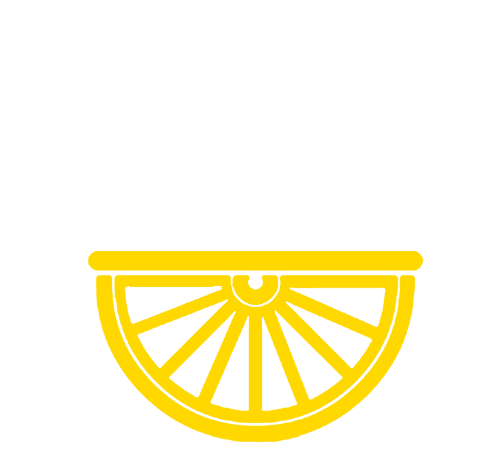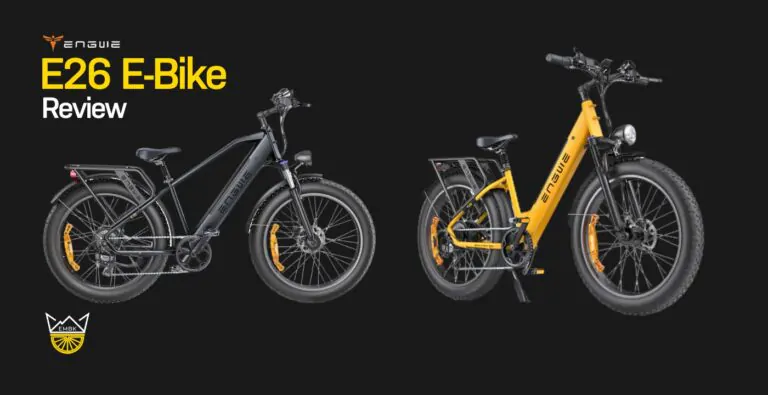
You might be reading this and wondering which is better between a fat tyre bike and a regular tyre mountain bike. You might also be wondering what exactly a fat tyre is.
In short, the main difference between fat tyres and regular mountain bikes is, unsurprisingly, the size of the tyre. Fat tire bikes have oversized tires which are much larger than regular mountain bike tyres. As for whether both can be possible? The answer is yes. Fat bikes are designed for off-roading and are therefore well-suited to (certain types of) mountain trails just as regular tyre mountain bikes are.
First, though, let’s explore in greater detail the difference between fat tyre bikes and regular mountain bikes.
What’s the Difference Between a Mountain Bike and a Fat Bike?
The main difference between fat tyre bikes and regular mountain bikes is in the name: fat wheel mountain bikes have much much larger wheels than their traditional counterparts.
Tyre Width
A regular MTB tyre width is likely to be within a range of around 45mm-63.5mm, depending on the manufacturer and what you go for. So, not that big.
On the other end of the spectrum – the fat wheel bikes have a tyre width in a much larger range – between 93mm-127mm, and in some cases even greater than that.

Rim Size
It isn’t just the width that differs in the mountain bike vs fat bike comparison, though. As a result of the much wider tyre on the mountain fat bike, you also need a different size of rim when compared with regular MTBs.
The rim size on a fat wheel mountain bike is 55mm or wider, with 65mm being the most popular. This is hugely different from the rims on regular mountain bike tyres, which come in at a comparatively puny 30mm wide.

Now, with the tyres being completely different sizes on a fat mountain bike compared with that of a regular mountain bike, that creates more considerations for the rest of the fat bike, too.
Frame Clearance
One area in particular is the clearance on the frame. Because your fat bike tyres are wider and bigger, they would smash into a normal MTB bike set up and mean you couldn’t turn.
But the fat bike manufacturers have that covered for you – they make the fork arms, seat stays and chain stays extra wide to compensate for those extra large wheels and tyres.
The fat bike hubs usually come in at 170mm-190mm; significantly larger than a regular mountain bike, which comes in at around 142mm.

Bottom Brackets and Spindle Cranksets
Because fat bike tyres are so wide, the bottom brackets and spindle cranksets also need to expand, too. For a fat bike, this usually means 100mm bottom brackets and 100mm spindle cranksets.
This is considerably larger than the respective bottom bracket and spindle crankset sizes for standard mountain bikes, which come in at 68mm (or sometimes 73mm).

Tyre Pressure
Finally, and importantly, the tyre pressures that both fat bikes and standard mountain bikes run at are completely different.
Most mountain bike riders usually run their tyres at around 22-25psi (1.5 – 2.4 bar). You won’t need to be pumping quite as much for your fat bike tyre, though.
A mountain fat bike tyre runs at an incredibly low pressure – around 5-14psi (0.34 bar – 0.97 bar).

To recap, fat bikes have:
- Wider tyres
- Larger wheels
- Larger frame clearance – fork arms, seat stays and chain stays extra wide
- Wider bottom brackets and crank sets
- Lower tyre pressure
What are the Pros and Cons of a Fat Tyre Mountain Bike?
At this point, you might be wondering what exactly a fat bike is used for? What are the advantages of a fat bike and what are the disadvantages of a fat bike? And is a fat bike easier to ride than a mountain bike?
At a glance:
| Fat Tyre Mountain Bike | |
|---|---|
| Pros | Cons |
| All Terrain | Energy Expenditure |
| Smooth Ride | Scarcity of Replacement Parts |
| Great Grip | Heavy |
| Balanced Weight Distribution | Expensive |
In more depth:
Pros:
All Terrain
The much larger wheels allow you to take that fat bike to areas where you couldn’t reach on your usual mountain bike. They’ll happily negotiate super soft, churned up conditions, your local sandy beach won’t be a problem and nor will snow.
Smooth Ride
The larger and wider tyres on the fat bike mean you won’t feel anywhere near as many bumps or vibrations as you would on your regular mountain bike. The large tyres soak up a lot of the impact, which certainly makes for an easier day on the wrists!
Grip
Your larger fat bike wheels equate to more traction and grip on the ground. That allows you to tackle all sorts of terrain, while also not spinning in the mud or wet conditions.
Weight Distribution
The fat tyres mean the ability to balance is heightened, as there is greater surface area of the fat bike tyre touching the ground. This means that fat bikes offer a really good option for beginners, or for people who feel a bit uncomfortable on a regular MTB.
Cons:
Energy
Due to the amount of resistance the tyres have on the ground, it means you need to exert much more energy than you would have to on your conventional mountain bike. They aren’t exactly efficient in that sense, and this isn’t ideal if you’re trying to go a long way or keep up with your buddies on regular MTBs.
Replacements
It’s much harder to get hold of replacement parts for a fat bike than for a regular mountain bike. Fewer shops and market places stock the pieces, so you could find yourself on a bit of a hunt if you have a problem with your fat mountain bike.
Heavy
With many of the fat bike’s elements being larger, this also means the bike is much heavier as a result. It means they aren’t great for throwing around narrow trails, endless tricky climbs or hitting jumps.
Expensive
Because fat bikes are still relatively uncommon, they tend to be more expensive than their regular counterparts.
How, then, do these weigh up against the pros and cons of a regular mountain bike?
What are the Pros and Cons of a Regular Tyre Mountain Bike?
At a glance:
| Regular Tyre Mountain Bike | |
|---|---|
| Pros | Cons |
| Lighter and Faster | Inappropriate for Certain Terrains |
| Readily Available Replacement Parts | Heavy |
| Inexpensive (Comparatively) | Expensive |
In more depth:
Pros:
Lighter and Faster
A standard MTB is much lighter than a fat tyre bike. This means it is more manoeuvrable, and so you can more easily throw it along the tails, corner better, hop over things more easily and get up hills and tricky terrain more easily.
Due to its reduced weight, you’ll fly down the paths and trails much quicker on a standard MTB than you would on a fat tyre mountain bike. It makes many rides far easier as a result.
Replacements
It’s much easier to get replacement parts for a standard mountain bike. Most online bike market places and shops stock MTBs, this isn’t always the case for fat bikes.
Cheaper
Mountain bikes are currently cheaper than their fat bike brothers. Their availability and the ease of getting parts means that prices are lower when compared with fat mountain bikes.
Cons:
Terrain Sensitive
A mountain bike will get you to lots of places – on your trails, off-road, etc. – but it’s no good in soft snow, sand or seriously boggy conditions. You’re likely to be spinning in the same place or toppling off your bike. Fat bikes, on the other hand, can tackle them all.
Fat Bike vs Mountain Bike Crossover and Comparison
So, we’ve now looked at how a fat mountain bike and a regular mountain bike differ, and they do in many ways, but now let’s look at what’s similar.
The Main Similarity
Off-Road Capabilities
Both a fat mountain bike and a regular MTB are superior off-road compared to how they perform on road. They both prefer the mud and trails to a pavement or tarmac road. This is because the tyres on both bikes are made to grip and, on the road, they aren’t efficient due to the increased amount of traction. So, they are similar in that sense.
And don’t get us wrong here, despite the pros and cons we mentioned in the previous section, both a fat bike and a mountain bike will most certainly get you smoothly out around an standard off-road trail and country path, on a fairly average day condition wise.
Although the mountain bike will get you around quicker, the fat bike will also still provide a more-than-acceptable chariot. It’s when we come to more unusual surfaces and conditions where the difference between a fat bike and a mountain bike can really be felt, and where the fat bike will be superior. That said, it can’t offer the same kind of agility conferred by a regular MTB.
Comparison Summary
A fat bike (whether conventional or an ebike version) is more than acceptable to enjoy a good day out riding in nature and standard trails, but they aren’t best in the more complex, narrow, hair raising routes.
Price Comparison – Fat Bikes vs Mountain Bikes
We mentioned earlier that you might have to dip a bit deeper into your wallet for a fat bike compared to a standard mountain bike, but what exactly is the difference in price? And are fat mountain bikes worth that extra cost?
You can get bikes cheaper than this at some supermarkets, or on budget sites, but if we’re talking about decent quality bikes and fat bikes, then these are the ranges we’re talking about.
Budget Range:
Mountain Bike
£350-£885 – at the bottom of this bracket the bikes are likely to be heavier, made out of aluminium, but will get lighter as you get closer to that $1,000 figure. They will be solid rides for beginners and for standard types of riding.
Fat Bike
£700-£1,600 – you aren’t likely to find a decent quality, beginner fat bike under that $1,000 figure. There will be options from complete budget sites and stores, but the quality is likely to be shaky. If we’re talking about proper, trustworthy bike brands, then it’s $1,000 and above, unless you’re very lucky with a good deal.
Mid-range:
Mountain Bike
£880-£2,650 – the quality of what you’re getting now will increase rapidly. The bikes will become much lighter as they move into the carbon fibre models, and the performance will become far better. They’ll also be more geared up towards technical terrain and riding. Towards that $3,000 figure you’re talking about very good bikes,indeed, with specialised additions for all sorts of technical riding.
Fat Bike
£1,600-£2,650 – due to the specialist components for a fat bike, if you want a decent quality bike then you’re looking at the mid-range, with prices starting a lot higher than a conventional MTB.
High End:
Mountain Bike
£2,650-£4,400 – we’re talking about bikes for really serious riders here, who ride frequently. Full suspension, carbon fibre, super light and ready for all eventualities in the world of mountain biking.
Fat Bike
£2,650-£4,400 – now, although the prices have come closer together towards the high-end range, one big thing to consider is that replacement parts cost a lot more to get for a fat bike than they do for a MTB bike, and nor are as they as readily available or easy to get your hands on.
So, although the initial outlay may at least not be too dissimilar at the upper end of the spectrum, when you need to replace things you soon feel a big difference in your wallet.
Frequently Asked Questions (FAQs)
Are Fat Tire Bikes Better Than Mountain Bikes?
Both bike types have their pros and cons. It all depends on the type of riding you’re trying to do. A fat mountain bike is better than a mountain bike in certain conditions (snow, sand, thick boggy conditions) and it will give you a smoother ride due to the wide tyres. They’re also a really good starting point for a beginner or someone who feels unconfident on the narrower tyre mountain bike.
But mountain bikes are far lighter, faster and more manoeuvrable. MTBs are much better for tight trails, fast downhill riding, jumps and lots of steep inclines. They’re also, by and large, cheaper.
Is a Fat Tyre Bike Easier to Ride?
Due to the increased tyre size on a fat mountain bike they’re easier to balance upon, whilst also providing a smoother ride. So, yes they are easier to ride if you’re a beginner, compared to a standard MTB.
However, if you’re looking for pace and to get up tricky climbs and down trails, then the weight and size make it much much harder to ride. You’ll be exerting much more energy and therefore it’s a harder ride.
Are Fat Tyre Bikes Worth it?
The answer to that question ultimately depends on your budget. If you have more disposable income to work with, then you can afford to get a better-quality fat bike, and also afford to get your hands on the more expensive, scarcer parts that they require.
If you’re working on a tighter budget, however, then you’re better off getting a standard MTB as fat tyre bikes bought at the budget end of the price range tend to be far lower in quality. Whereas at that lower price range, you can still find a perfectly solid MTB.
It’s also a matter of what your riding intentions are; if you want to go riding in snow or across your local sand dunes, then a fat tire bike is definitely worth it. If you’re purely looking to traverse challenging woodland and mountain trails, on the other hand, then they become harder to justify.
Frequently Asked Questions (FAQs)
So, there you have it, an in-depth comparison between fat tire bikes and regular mountain bikes, as well as answering the question as to whether the two can feature as one. In short, yes you can have a fat tire mountain bike, but only for the easier trails. Be sure to check out our other ebike and mountain bike guides for more riding insights.



